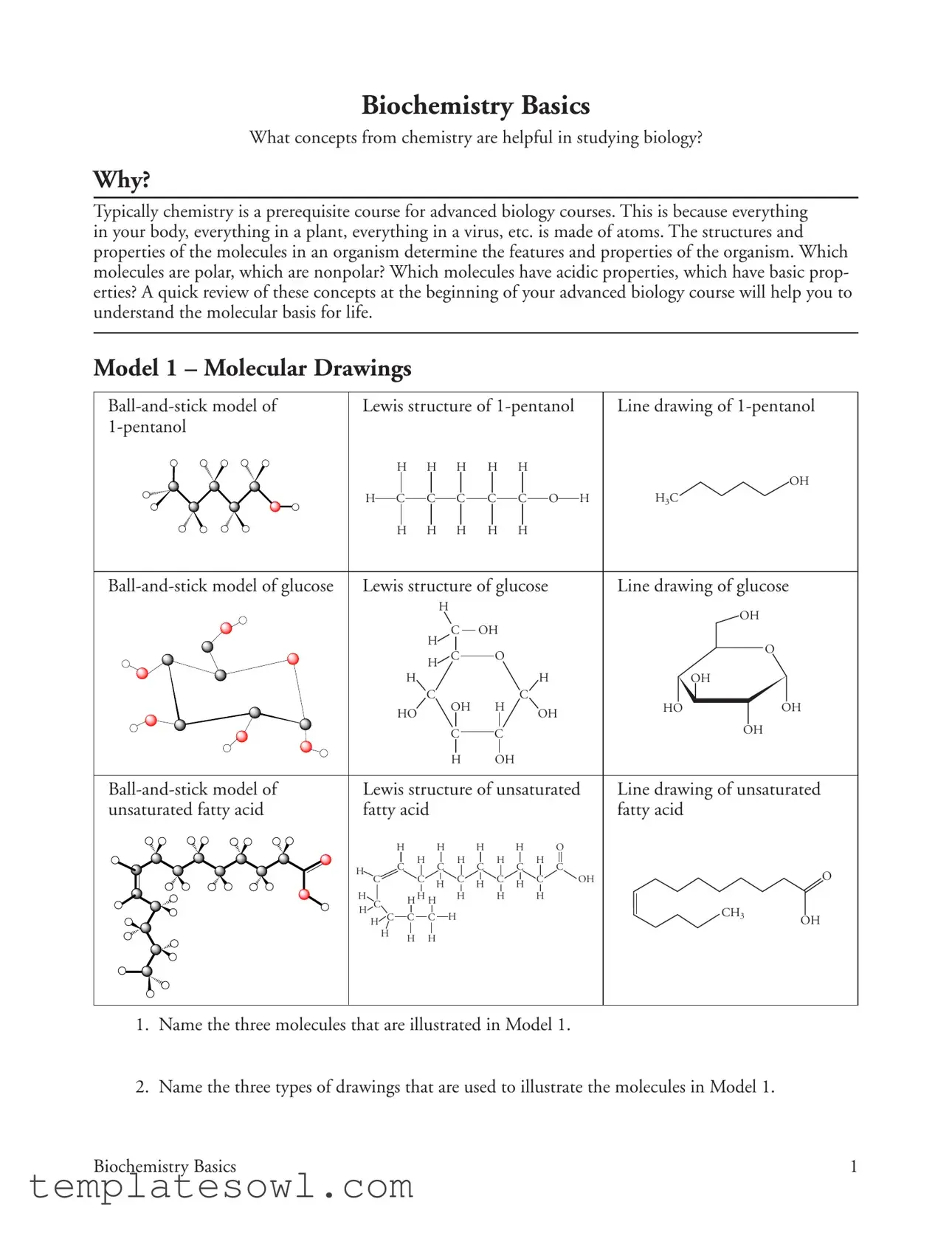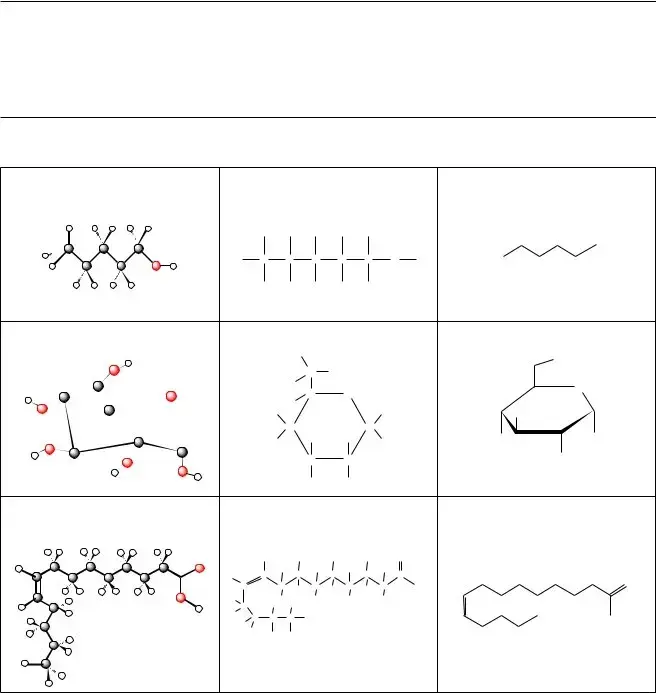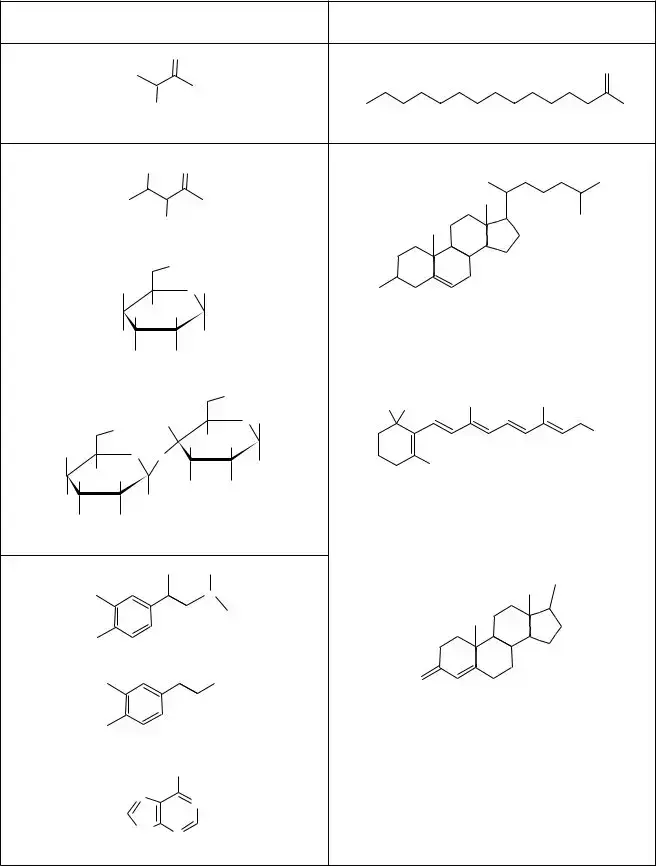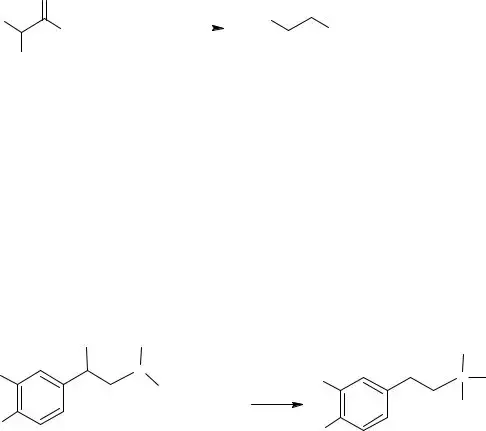What concepts from chemistry are helpful in studying biology and why?
Understanding basic chemistry concepts is essential for studying biology. Fundamental principles like the structure of atoms, types of molecules, and their properties can significantly enhance comprehension of biological processes. Everything in living organisms—from the cells in your body to the plants around you—is made up of atoms. These atoms form molecules, and the structures and properties of these molecules dictate how organisms function. A quick review of concepts such as polarity and acidity can provide a solid foundation for grasping the molecular basis of life as you delve deeper into biology.
What types of drawings are used to illustrate molecules, and which provides the most accurate image of a molecule's shape?
In Model 1, three types of drawings are employed: ball-and-stick models, Lewis structures, and line drawings. Ball-and-stick models give a three-dimensional view of the molecule, allowing for visual appreciation of bond angles and lengths. Lewis structures depict the arrangement of atoms and the lone pairs of electrons. Line drawings also show how atoms connect, but they simplify the representation by omitting certain atoms. Among these, the ball-and-stick model typically provides the most accurate depiction of a molecule's shape because it captures the spatial arrangement of atoms more effectively than the simplified line drawings.
How many bonds are typically formed by carbon, hydrogen, and oxygen atoms?
In general, carbon, hydrogen, and oxygen each display a characteristic bonding behavior. Carbon typically forms four bonds, allowing it to connect with various atoms and create diverse structures. Hydrogen usually forms one bond, as it has one electron to share. Oxygen, on the other hand, forms two bonds, pairing one electron from each of two other atoms. This bonding behavior is fundamental in understanding how these elements interact with one another to form larger biological molecules.
What is the advantage of using a line drawing instead of a ball-and-stick model or Lewis structure?
One significant advantage of using a line drawing is its simplicity and ease of interpretation. Line drawings reduce the clutter often associated with ball-and-stick models while clearly showing how atoms are connected. This streamlined representation can expedite the review and understanding of complex structures, particularly in advanced biological studies, where clarity and quick comprehension are crucial. Scientists often prefer line drawings for their practicality, especially when depicting large or intricate molecules.
What class of substances, polar or nonpolar, is more likely to be found in high concentrations in the bloodstream of a vertebrate?
Polar substances are more likely to be found in high concentrations in the bloodstream of vertebrates. This is primarily because blood is an aqueous solution, meaning it consists mostly of water, a polar molecule. Polar molecules dissolve well in water, allowing them to be transported effectively throughout the body. Nonpolar substances, however, tend to be hydrophobic and do not mix well with water, making it less likely for them to be present in high concentrations in the bloodstream.
How can you distinguish between polar and nonpolar molecules based on their atomic composition?
The distinction between polar and nonpolar molecules often hinges on their atomic composition. Polar molecules typically contain elements such as oxygen or nitrogen that can create an uneven distribution of electron density. This results in partial positive and negative charges within the molecule. Nonpolar molecules, in contrast, generally consist of atoms that share electrons more evenly, such as carbon and hydrogen. While both types can contain these elements, their overall shapes and the arrangements of their bonds determine whether the molecule is polar or nonpolar.







 H
H
